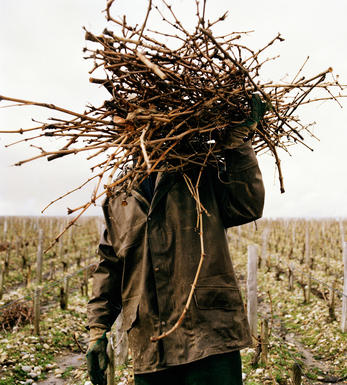
About this WINE

Ridgeview Wine Estate
Ridgeview Wine Estate is a family company dedicated solely to the production of the highest quality sparkling wine from traditional Champagne varieties and methods .
Aptly named with a scenic location on a plateau of paludina limestone near to the highest point of the Sussex Downs (Ditchling Beacon), Ridgeview has been making excellent sparkling wines for over a decade and have won numerous awards and trophies during this time in international and national competitions.
Mike Roberts was quick to recognise the potential of the region and its proximity to Champagne, both geographical and geological, and now makes an intriguing selection of fizz, all of it following the méthode champenoise pretty much à la lettre

Champagne blend
Which grapes are included in the blend, and their proportion, is one of the key factors determining the style of most Champagnes. Three grapes are used - Pinot Noir, Chardonnay and Pinot Meunier.
26% of vineyards in Champagne are planted with Chardonnay and it performs best on the Côtes des Blancs and on the chalk slopes south of Epernay. It is relatively simple to grow, although it buds early and thus is susceptible to spring frosts. It produces lighter, fresher wines than those from Burgundy and gives finesse, fruit and elegance to the final blend. It is the sole grape in Blancs de Blancs, which are some of the richest long-lived Champagnes produced.
Pinot Noir accounts for nearly 40% of the plantings in Champagne and lies at the heart of most blends - it gives Champagne its body, structure, strength and grip. It is planted across Champagne and particularly so in the southern Aube district.
The final component is Pinot Meunier and this constitutes nearly 35% of the plantings. Its durability and resistance to spring frosts make the Marne Valley, a notorious frost pocket, its natural home. It ripens well in poor years and produces a soft, fruity style of wine that is ideal for blending with the more assertive flavours of Pinot Noir. Producers allege that Pinot Meunier lacks ageing potential, but this does not deter Krug from including around 15% of it in their final blends.



Buying options
Add to wishlist
Description
From the 2010 vintage this outstanding English Sparkling Rosé from Ridgeview is beginning to show some interesting development. The characteristically firm acidity of English fizz still preserves the overall freshness but it is taking more of a back-seat; elegantly underscoring the fruit.
The nose still presents its fine floral notes but the red fruit, once delicate and summery, has taken on a slightly savoury edge; think tiny wild strawberries as opposed to their engorged supermarket counterparts. On the palate the fruit is persistent, the mousse fine, and the finish bright and mineral. In short; yes please.
Adam Holden Wholesale Account Manager
wine at a glance
Delivery and quality guarantee